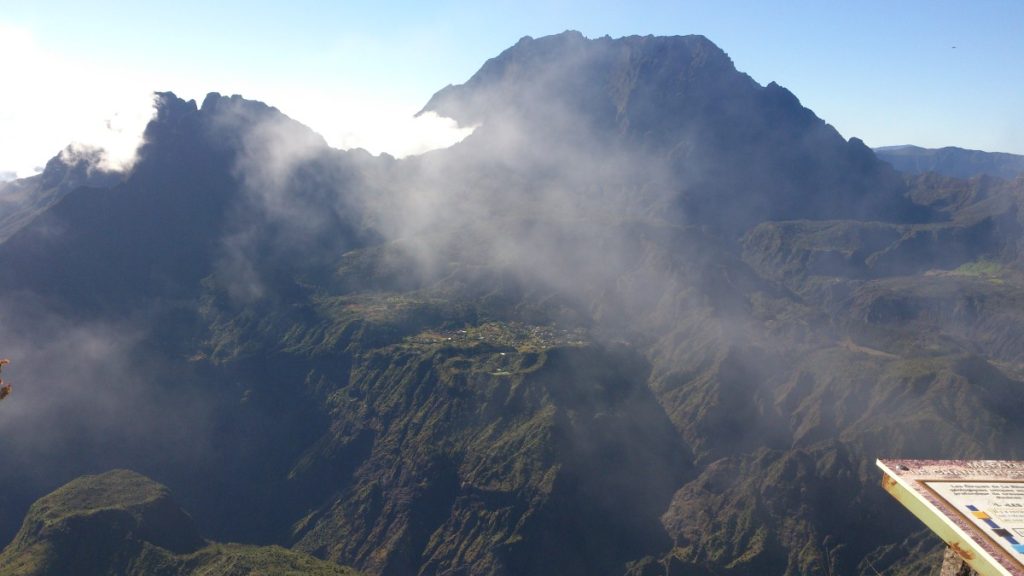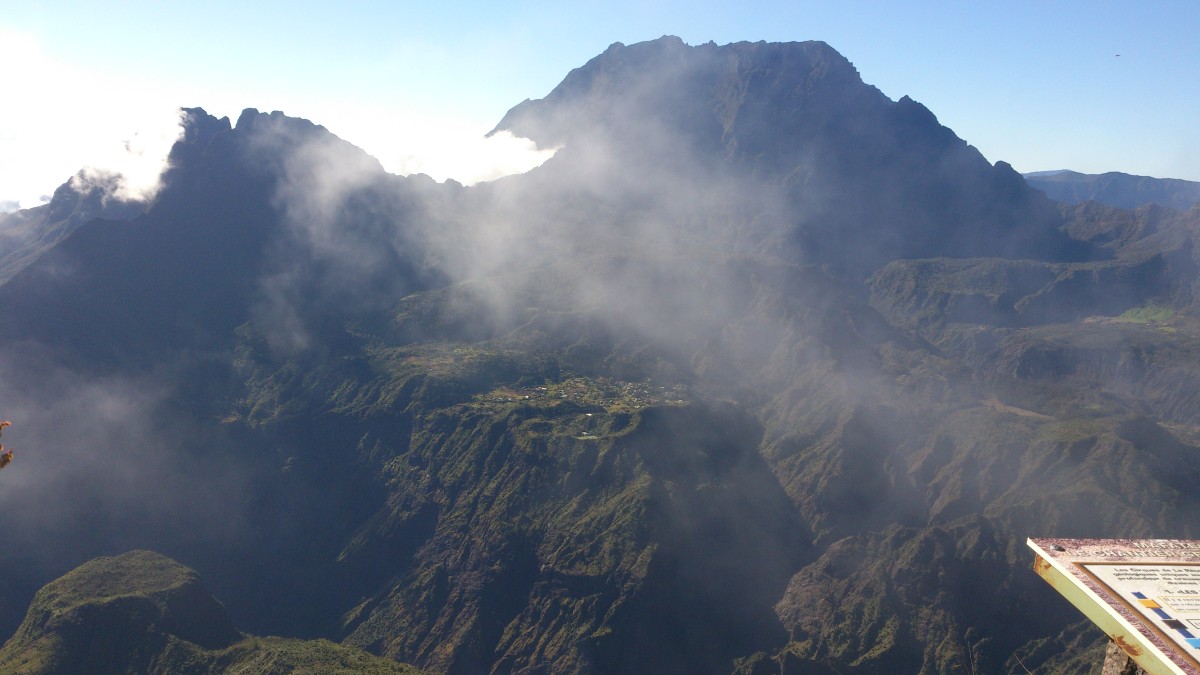Discovering Réunion Island: Beaches, Food & What You Should Really Know
When people think of tropical islands, they often imagine postcard-perfect beaches where you can swim anywhere, anytime. That’s what I thought, too—until I first visited Réunion Island. Married to a Réunionnais and having visited several times to see my mother-in-law, I’ve learned that Réunion island isn’t quite like the typical island you expect. It’s richer, deeper, and far more unique.

This is a place where every stunning view comes with a story, and every culinary delight has roots in a complex history. Forget the travel brochures; here are the essential truths I’ve gathered about this extraordinary place.
1. The Beach Reality: Where Swimming Becomes an Event
Before you pack your favourite bikini, you need to understand the ocean reality. Réunion island’s raw, powerful coastline means that swimming isn’t allowed on most beaches due to unpredictable currents and, critically, shark activity around the island.
This fact often shocks first-time visitors expecting easy access to the water. But don’t despair—you just have to know where to go.
- The Safe Zone: Your best bet is to stick to protected lagoons, especially around the vibrant area of Saint-Gilles-les-Bains, where natural coral reefs form safe havens. If you’re traveling with kids like I do, this is the safest and best area for relaxed, family-friendly swimming and snorkeling.
- Family Convenience: Saint-Gilles isn’t just safer—it’s also well-equipped with family resorts, restaurants, and easy beach access. We once stayed at LUX Saint Gilles. While the hotel itself was fine, the restaurants inside were truly impressive. Finding that safe spot where you can unwind while the kids play is half the battle won.
2. The Vertigo of Nature: Taking to the Sky
Réunion island’s rugged, volcanic landscape is its greatest feature. It’s a jaw-dropping mix of sharp peaks, deep ravines, and lush forests. Because much of the island’s beauty—its sheer cirques (natural amphitheatres) and hidden waterfalls—is inaccessible by road, a helicopter tour changes everything.
If your budget allows, book a helicopter tour. Buckle up and prepare to be amazed as you soar above the island’s natural wonders. You’ll be treated to breathtaking views of the Piton de la Fournaise volcano, the coral reefs, and the three magnificent cirques (Salazie, Cilaos, Mafate). This is more than a tour; it’s a once-in-a-lifetime kind of experience that reveals the true, untamed heart of the island.
3. What to Eat: Street Snacks to Traditional Dishes
Start your culinary journey with easy street snacks like samosas, bouchons (steamed pork dumplings), and the local Dodo beer. These are affordable and quickly available. For full, traditional meals, focus on the island’s unique Creole ‘Big Three’ staple dishes:
- Rougail Saucisse: A comforting dish of smoked sausages simmered in a spicy tomato-based sauce infused with thyme, ginger, and garlic. It’s the ultimate Réunionnais comfort food.
- Carry: The island’s signature savory curry, reflecting the diverse heritage from Indian, Chinese, African, and French cuisines. Try Carry Poulet (chicken) or Carry Poisson (fish).
- The Bouchon Sandwich: For a heartier option, grab a pain bouchon—a hot baguette stuffed with steamed pork dumplings and served with chili pepper dip from a local food truck.
- Lychees and mangoes:Go during fruit season (November to January) and eat lychees and mangoes as much as possible. They’re much juicier and sweeter than what you’ll find abroad. Street vendors often sell them by the kilo, freshly picked and incredibly fragrant.
Why is Réunion Still Part of France?
Many people ask why Réunion isn’t independent. The island is an official French overseas department, meaning it’s considered part of France—just like Hawaii is to the U.S. That’s why everything from currency (Euro) to healthcare follows the French system.
Crucially, this history explains why the food is so incredibly diverse. French colonization brought workers and slaves from India, Africa, China, and Madagascar. This created the unique Creole food culture we enjoy today—a cuisine that tells the story of many worlds colliding on one beautiful volcanic rock. It’s history you can literally taste in every bite of a spicy Carry.
4. The Sweet Secret of the Island: Sugar Cane, Rum, and Punch
You can’t talk about Réunion island’s identity without talking about sugar cane. Though vanilla is famous, the endless fields of sugar cane truly define the landscape and the local economy. This industry dictates more than just agriculture—it affects the taste of everything, especially soft drinks.
My first experience with a local cola was a shock; it tasted noticeably sweeter than what I was used to in North America. This isn’t just a quirk; it’s a direct result of the deeply entrenched sugar culture.
This sweet legacy naturally leads to the island’s most famous products: Rhum and Punch.
Rhum Arrangé and Punch: The Heart of Réunion Socializing
If you’re invited to a local family gathering, you’ll inevitably be offered Rhum Arrangé. Unlike traditional rum, this is aged rum infused with local spices, fruits (like lychee or vanilla), and sugar cane syrup. My mother-in-law takes immense pride in her homemade batches—each family has their secret recipe!
- Punch: A simpler, sweeter cocktail often made with rum, fruit juice, and cane syrup. It’s perfect for a casual afternoon on the veranda.
- Why it Matters: These aren’t just drinks; they are a ritual. Sharing a glass of Rhum Arrangé is an act of welcoming and connection. Don’t be afraid to try a small glass when offered—it’s a taste of true Réunionnais hospitality.
5. Beyond the Souvenirs: Shopping for the Authentic “Nou la fé”
If you’re shopping for souvenirs, it’s easy to buy items that were actually imported from Madagascar. There’s nothing inherently wrong with that, but if you want to support the local economy and take home something truly Réunionnais, you need to know the local label.
Look for “Nou la fé”: This phrase means “We made it” in Creole and is the official mark used to identify local artisans, farmers, and truly authentic Réunionnais products. You’ll often find this label on vanilla, spice blends, jams, and unique crafts at local markets and even in supermarkets. It’s a small way to ensure your purchase directly benefits the people of the island.
✨Bonus: Vanilla and Coffee Lovers, Take Note
If you have extra time and don’t mind the heat, consider visiting La Maison de la Vanille and the Domaine du Café Grillé. They’re not “must-see” attractions, but they are worth checking out if you’re interested in local flavours and production methods. Just plan to go early in the morning—afternoon visits can be hot and uncomfortable, especially with kids.
🌿Final Thoughts
Réunion Island truly offers a different kind of tropical experience. It’s a mix of raw nature, vibrant culture, and unforgettable food. Whether you’re flying above volcanoes, swimming in coral lagoons, or enjoying samosas by the beach, this unique island delivers something deeper than just pretty beaches. To fully enjoy your Réunion Island travel experience, do your homework, support local, and dive into the real Réunion.
We hope this guide helps you prepare! If you are planning a trip soon, you might find our budgeting guides helpful for saving up for that unforgettable helicopter tour:
3 Essential Savings Accounts You Need to Know as a Newcomer to Canada




